Experimental Study on a Laterally Loaded Pile Under Scour Condition Using Particle Image Velocimetry Technology
Abstract
1. Introduction
2. Materials and Methods
2.1. Model Pile Characteristics
2.2. Experimental Loading Device
2.3. Test Schedule
2.4. Principle of PIV Technology in the Tests
3. Results and Discussion
3.1. The Effect of Scour Depth
3.2. The Effect of Scour Slope
3.3. The Effect of Scour Width
3.4. PIV Analysis
4. Conclusions
- (1)
- Scour will weaken the structural stability and bearing performance of the pile foundation. In cases of both general and local scour, when the scour depth increases from 0D to 2D, the pile head displacement increases by 34% and 25%, respectively. It is recommended to avoid exposing pile foundations to a completely scoured environment in engineering practices.
- (2)
- Under the same lateral load, as the scour depth increases, the scour slope decreases, and the scour width increases, the maximum bending moment of the pile increases, reducing the bearing capacity of the pile foundation. The influence of scour depth, slope, and width on pile bearing stability decreases successively. The maximum bending moment of the pile increases, and the bearing capacity of the pile foundation is reduced when the scour depth increases, the scour slope decreases, or the scour width increases.
- (3)
- All PIV images indicate that regardless of changes in scour factors, soil deformation progresses from near to far and from the shallow layer to the bottom layer. As the lateral load on the pile head increases, soil displacements and strains in the passive zone in front of the pile develop gradually in both radial and vertical directions. The soil deformation is primarily observed in the middle and upper soil layers, with minimal deformation at the bottom of the pile. There is no distinct rotation center during the movement of the pile, which overall exhibits the characteristics of a flexible pile.
Author Contributions
Funding
Data Availability Statement
Acknowledgments
Conflicts of Interest
References
- Liu, Q.; Lei, X.; Lai, Y.; Qin, M.; Zhang, X.; Ma, L.; Dai, K.; Yang, Y.; Bashir, M. Analysis of dynamic response of offshore wind turbines subjected to earthquake loadings and the corresponding mitigation measures: A review. Ocean. Eng. 2024, 311, 118892. [Google Scholar] [CrossRef]
- Sánchez, S.; López-Gutiérrez, J.S.; Negro, V.; Esteban, M.D. Foundations in Offshore Wind Farms: Evolution, Characteristics and Range of Use. Analysis of Main Dimensional Parameters in Monopile Foundations. J. Mar. Sci. Eng. 2019, 7, 441. [Google Scholar] [CrossRef]
- Ren, Z.R.; Zhen, X.W.; Jiang, Z.Y.; Gao, Z.; Li, Y.; Shi, W. Underactuated control and analysis of single blade installation using a jackup installation vessel and active tugger line force control. Mar. Struct. 2023, 88, 103338. [Google Scholar] [CrossRef]
- Zhang, Y.; Shi, W.; Li, D.S.; Li, X.; Duan, Y.F.; Verma, A.S. A novel framework for modeling floating offshore wind turbines based on the vector form intrinsic finite element (VFIFE) method. Ocean. Eng. 2022, 262, 112221. [Google Scholar] [CrossRef]
- Wang, X.F.; Zeng, X.W.; Li, J.L.; Yang, X.; Wang, H.J. A review on recent advancements of substructures for offshore wind turbines. Energy Convers. Manag. 2018, 158, 103–119. [Google Scholar] [CrossRef]
- Doherty, P.; Gavin, K. Laterally loaded monopile design for offshore wind farms. Proc. Inst. Civ. Eng. Energy. 2012, 165, 7–17. [Google Scholar] [CrossRef]
- Albiker, J.; Achmus, M.; Frick, D.; Flindt, F. 1 g model tests on the displacement accumulation of large-diameter piles under cyclic lateral loading. Geotech. Test. J. 2017, 40, 173–184. [Google Scholar] [CrossRef]
- Achmus, M.; Kuo, Y.S.; Abdel-Rahman, K. Numerical investigation of scour effect on lateral resistance of windfarm monopiles. In Proceedings of the Twentieth International Offshore and Polar Engineering Conference, Beijing, China, 20–25 June 2010. [Google Scholar]
- Liang, F.; Zhang, H.; Chen, S. Effect of vertical load on the lateral response of offshore piles considering scour-hole geometry and stress history in marine clay. Ocean. Eng. 2018, 158, 64–77. [Google Scholar] [CrossRef]
- Yu, F.; Zhang, C.R.; Huang, M.S.; Yang, X.F.; Yao, Z.M. Scouring effects on lateral cyclic responses of piles in sand. Eur. J. Environ. Civ. Eng. 2023, 27, 1941–1956. [Google Scholar] [CrossRef]
- Zhang, C.R.; Zhang, X.; Huang, M.S.; Tang, H.W. Responses of caisson-piles foundations to long-term cyclic lateral load and scouring. Soil Dyn. Earthq. Eng. 2019, 119, 62–74. [Google Scholar] [CrossRef]
- Lin, C.; Han, J.; Bennett, C.; Parsons, R.L. Analysis of laterally loaded piles in sand considering scour hole dimensions. J. Geotech. Geoenviron. Eng. 2014, 140, 04014024. [Google Scholar] [CrossRef]
- Yang, X.F.; Zhang, C.R.; Huang, M.S.; Yuan, J.Y. Lateral Loading of a Pile using Strain Wedge Model and Its Application under Scouring. Mar. Georesour. Geotech. 2018, 36, 340–350. [Google Scholar] [CrossRef]
- Qi, W.G.; Gao, F.P.; Randolph, M.F.; Lehane, B.M. Scour effects on p–y curves for shallowly embedded piles in sand. Géotechnique 2016, 66, 648–660. [Google Scholar] [CrossRef]
- Tong, L.; Zhou, H.; Sheil, B.; Liu, H.L.; Chen, R.L. Full-field internal 3D deformations measurement of transparent soil using 3D-DIC combined with optical slicing. Acta. Geotech. 2024, 19, 1627–1648. [Google Scholar] [CrossRef]
- Wu, T.H.; Gao, Y.T.; Huang, C.F.; Zhou, Y.; Li, J.W. Mechanical Behavior of Single and Group Piles with a Low Cap Adjacent to Shield Tunneling in Composite Ground: Insights from Centrifugal Model Testing. Geotech. Geol. Eng. 2024, 42, 7451–7480. [Google Scholar] [CrossRef]
- Liu, C.; Tang, X.W.; Wei, H.W.; Zhao, H.H. A new spatial deformation measurement method using 3D reconstruction technology during pile penetration. KSCE J. Civ. Eng. 2021, 25, 4106–4120. [Google Scholar] [CrossRef]
- De-Cataldo, D.; Chen, K.; Airey, D. Three-dimensional deformations in transparent soil using fluorescent markers. Int. J. Phys. Model. Geotech. 2017, 17, 122–134. [Google Scholar] [CrossRef]
- Wang, Z.Y.; Xu, X.Y.; Li, Z.Q. Research on the Pile–Soil Interaction Mechanism of Micropile Groups in Transparent Soil Model Experiments. Buildings 2024, 14, 2753. [Google Scholar] [CrossRef]
- Yuan, B.X.; Sun, M.; Wang, Y.X.; Zhai, L.H.; Luo, Q.Z.; Zhang, X.Q. Full 3D displacement measuring system for 3D displacement field of soil around a laterally loaded pile in transparent soil. Int. J. Geomech. 2019, 19, 04019028. [Google Scholar] [CrossRef]
- Yang, Y.L.; Qi, M.L.; Li, J.Z.; Ma, X.D. Experimental study of flow field around pile groups using PIV. Exp. Therm. Fluid Sci. 2021, 120, 110223. [Google Scholar] [CrossRef]
- Zou, X.J.; Jiang, Y.C.; Wang, Y.K. Failure mechanism of single pile-friction footing hybrid foundation under combined V–H–M loadings by PIV experiments and FE method. Ocean. Eng. 2023, 280, 114461. [Google Scholar] [CrossRef]
- Bayton, S. Centrifuge Modelling of Monopiles in Sand Subject to Lateral Loading. Doctoral Dissertation, University of Sheffield, Sheffield, UK, 2020. [Google Scholar]
- Randolph, M.F.; Wroth, C.P. An analysis of the vertical deformation of pile groups. Geotechnique 1979, 29, 423–439. [Google Scholar] [CrossRef]
- White, D.J.; Take, W.A.; Bolton, M.D. Soil deformation measurement using particle image velocimetry (PIV) and photogrammetry. Geotechnique 2003, 53, 619–631. [Google Scholar] [CrossRef]
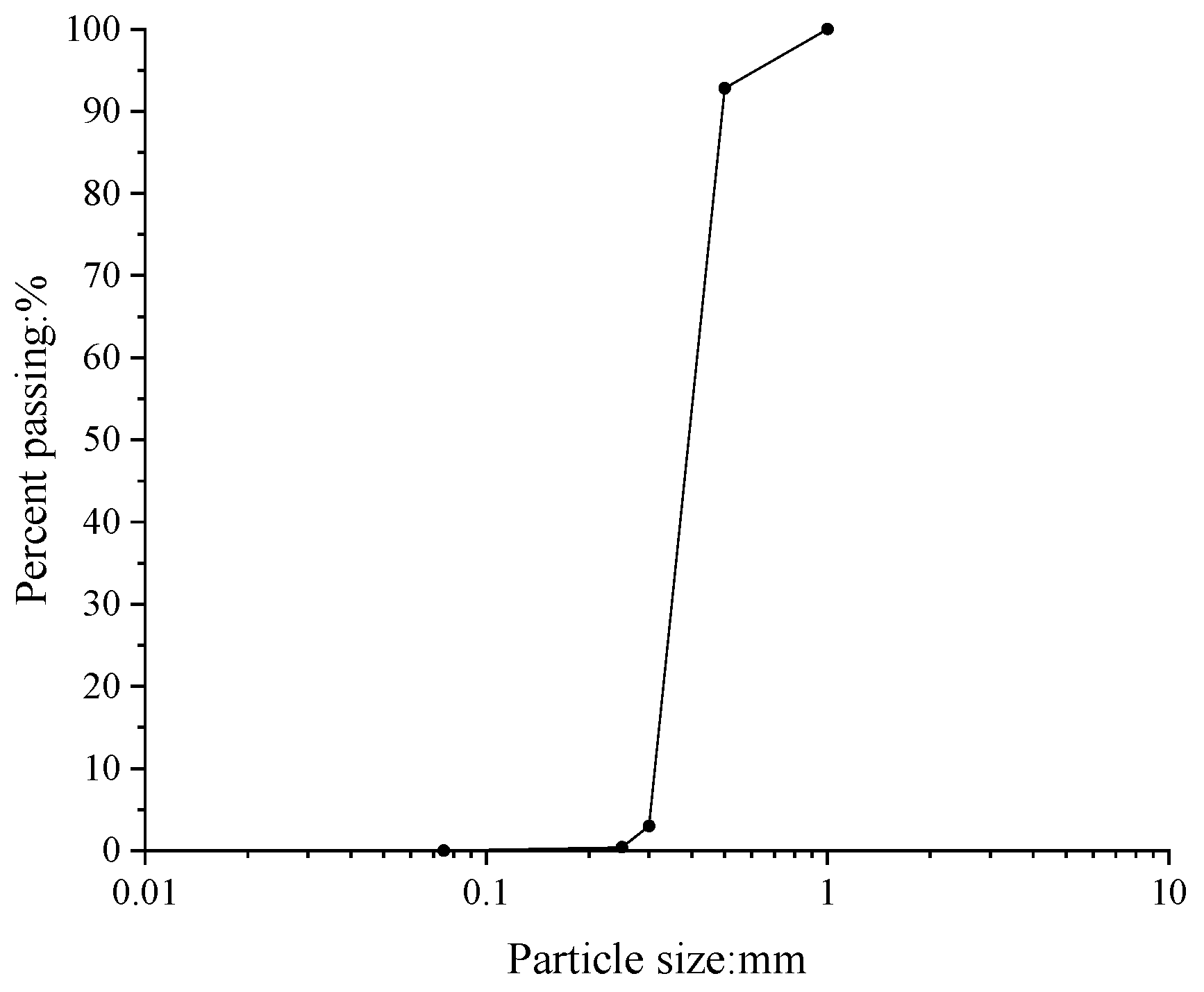
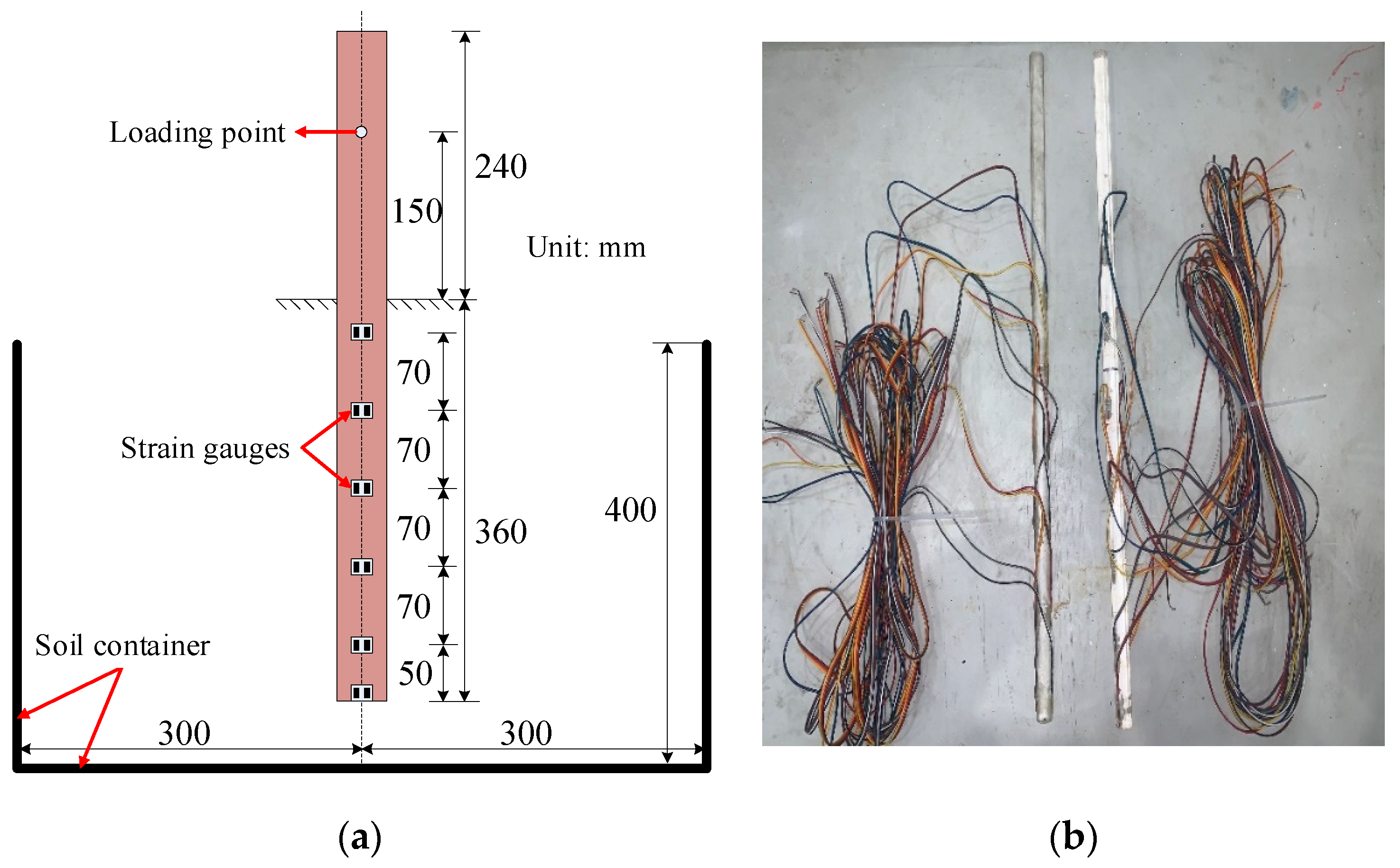
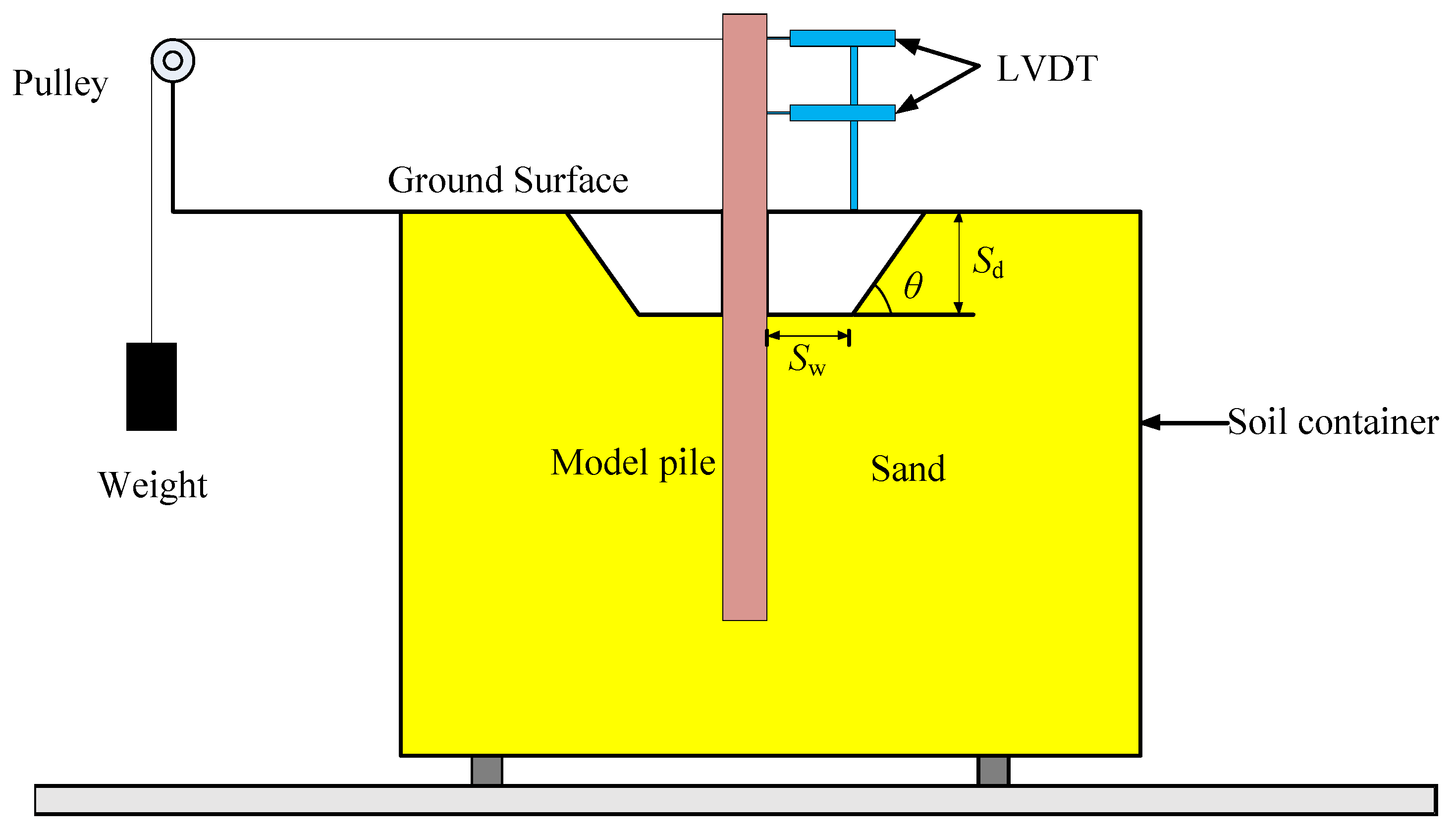
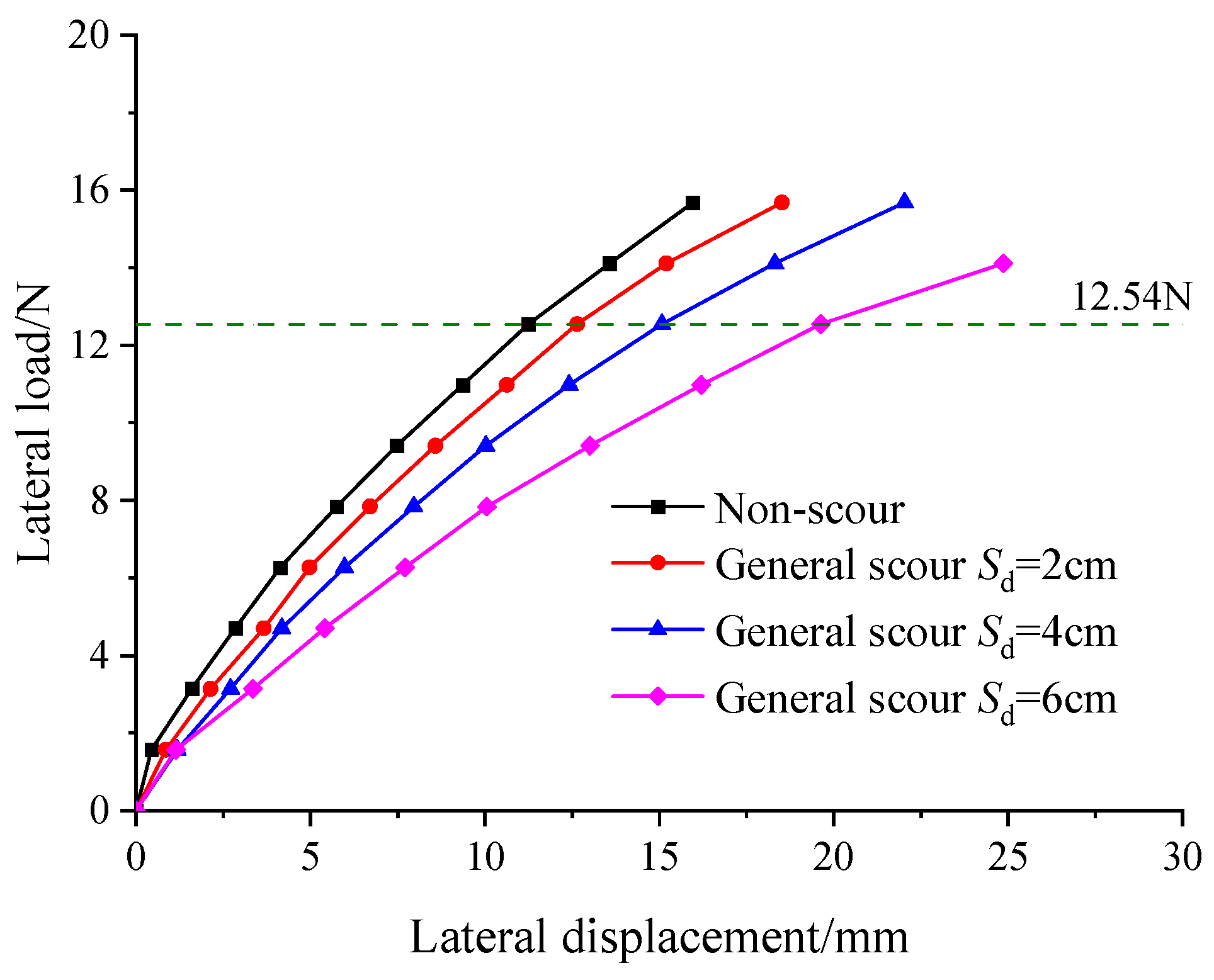

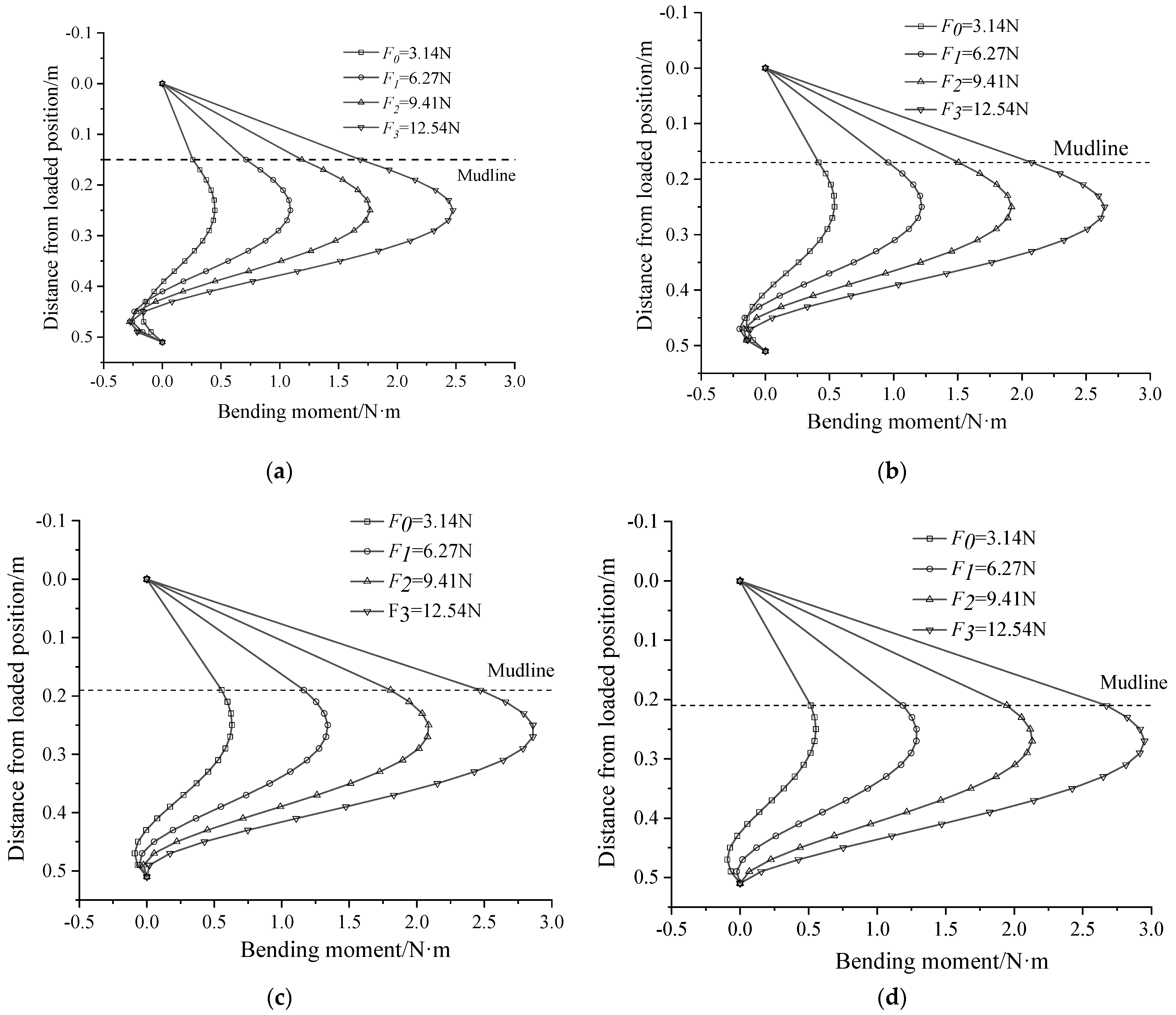



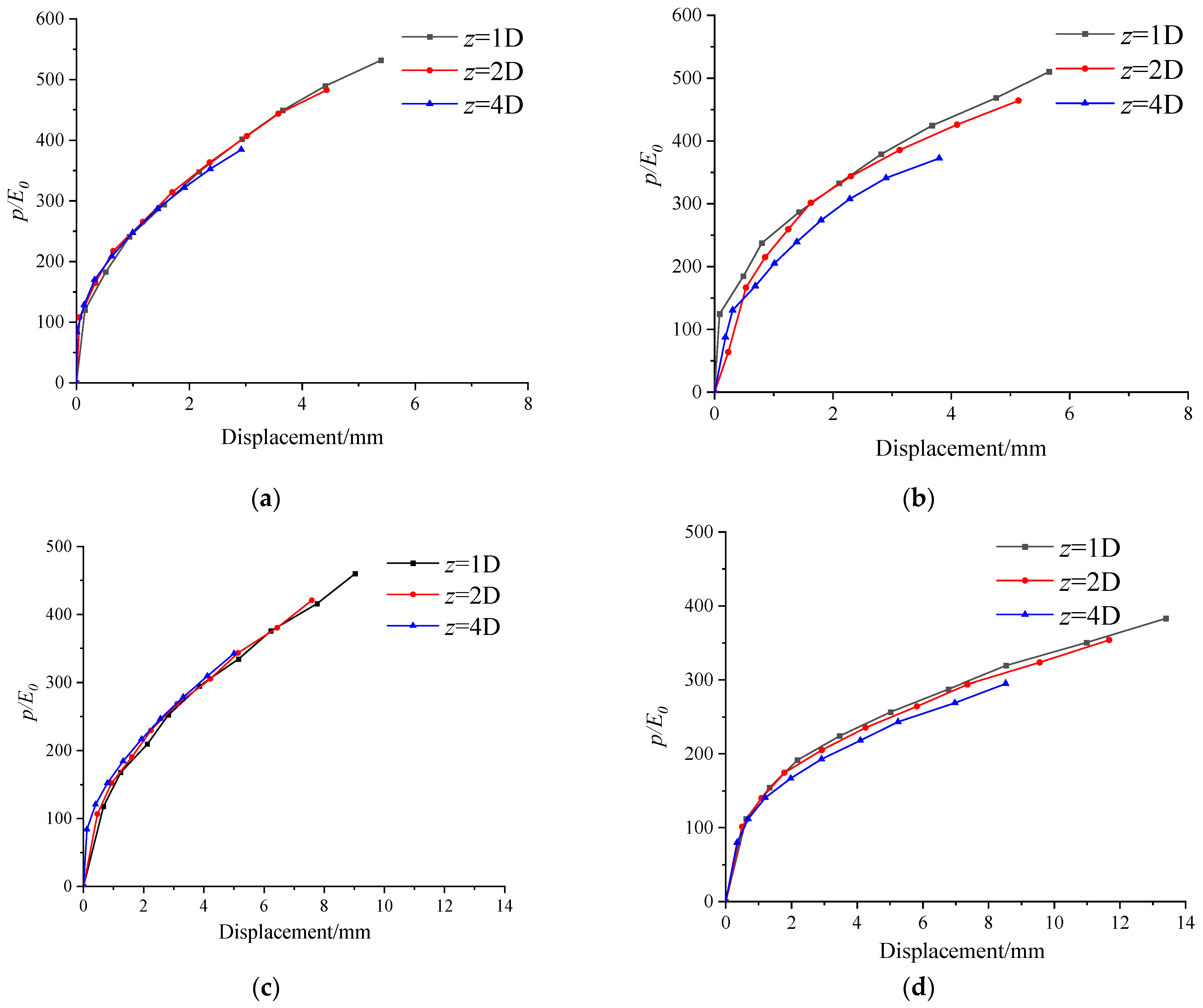


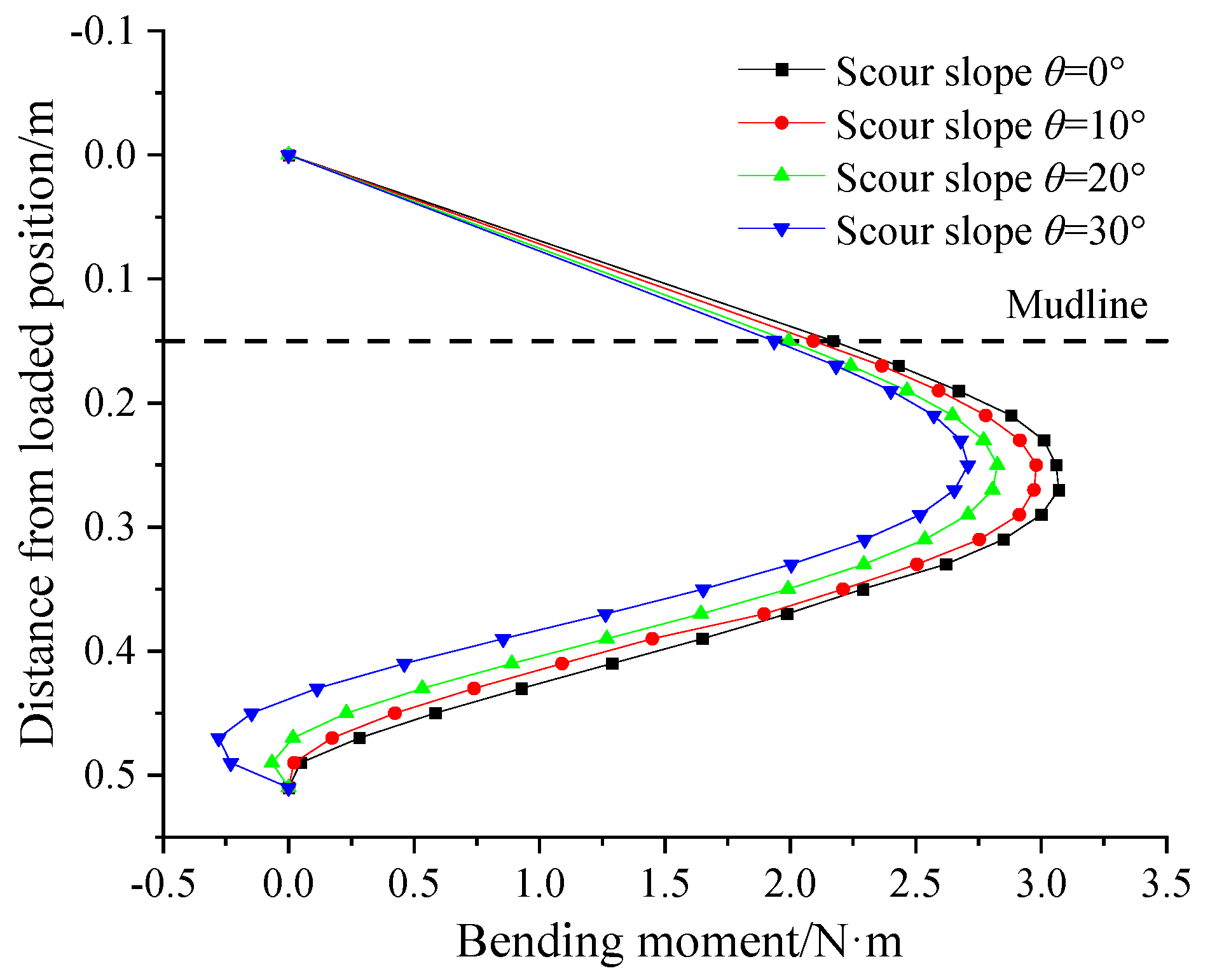

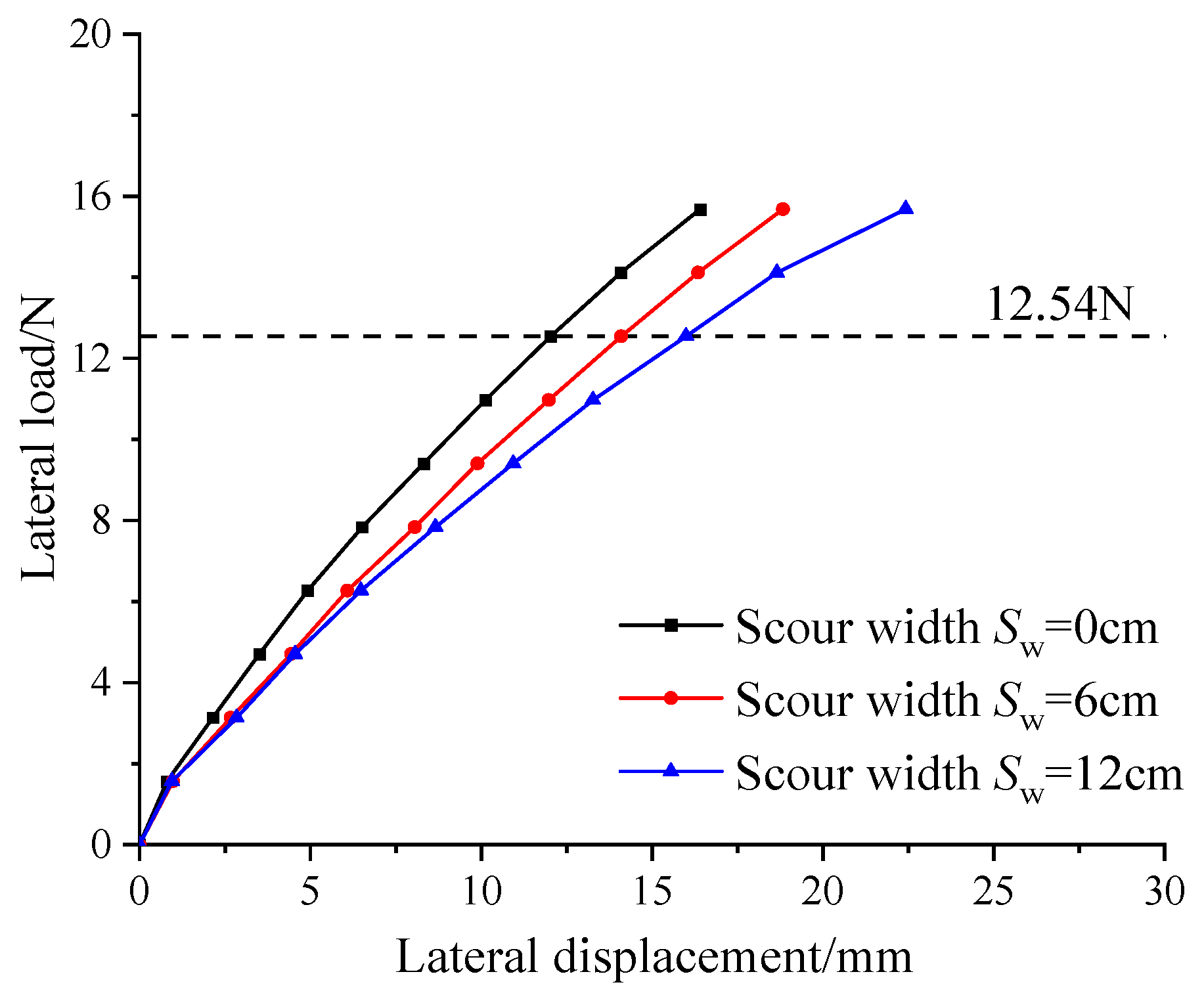

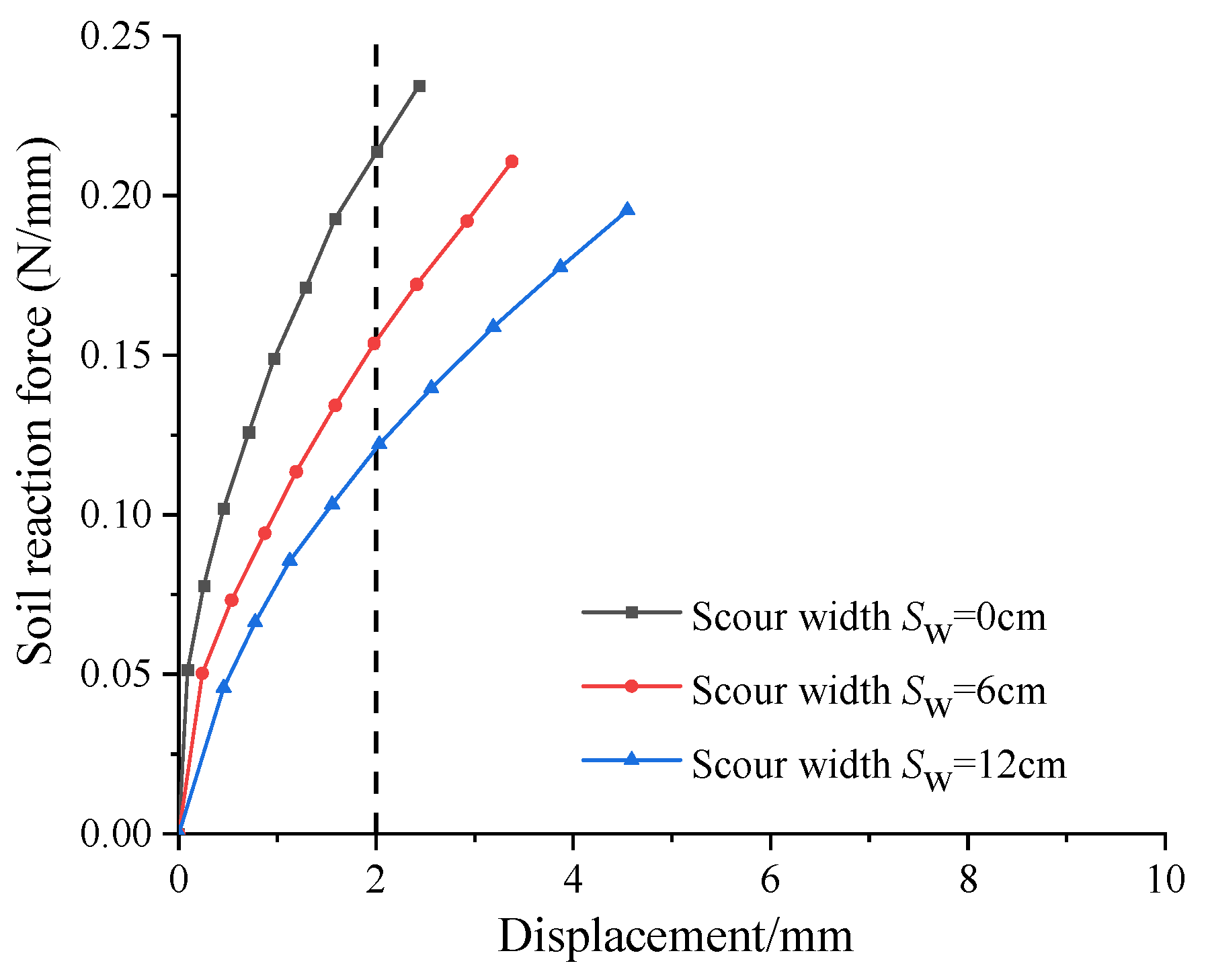

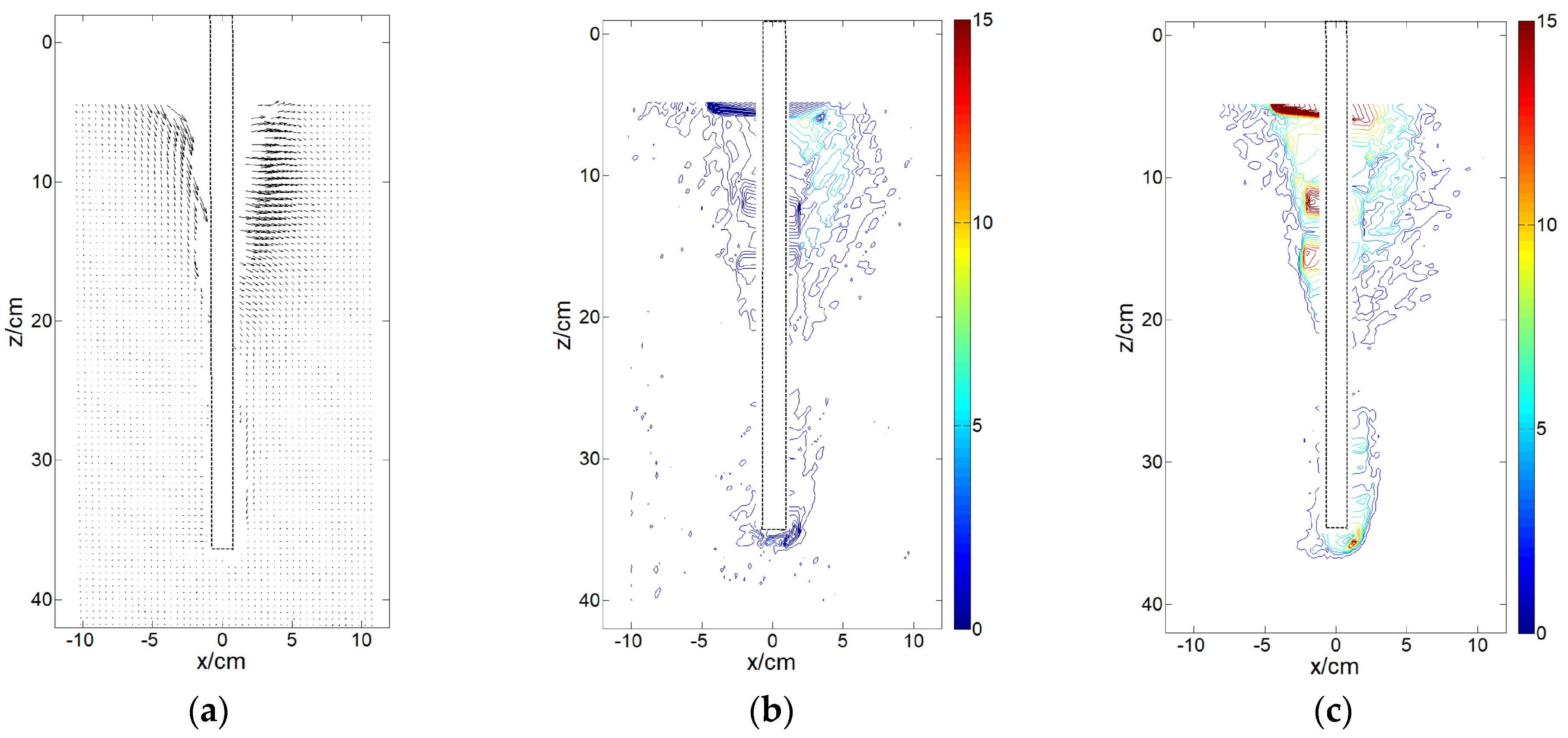

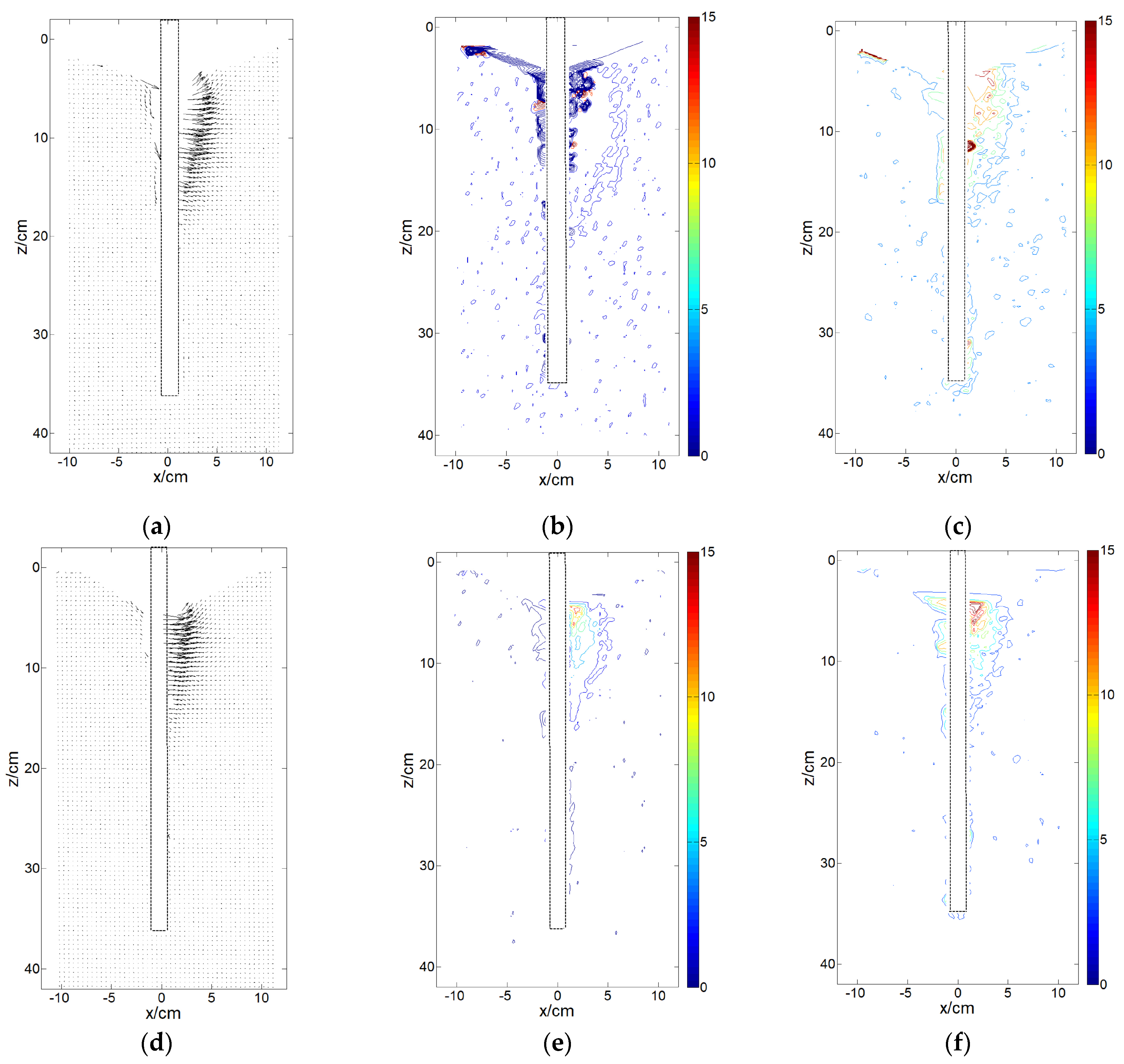
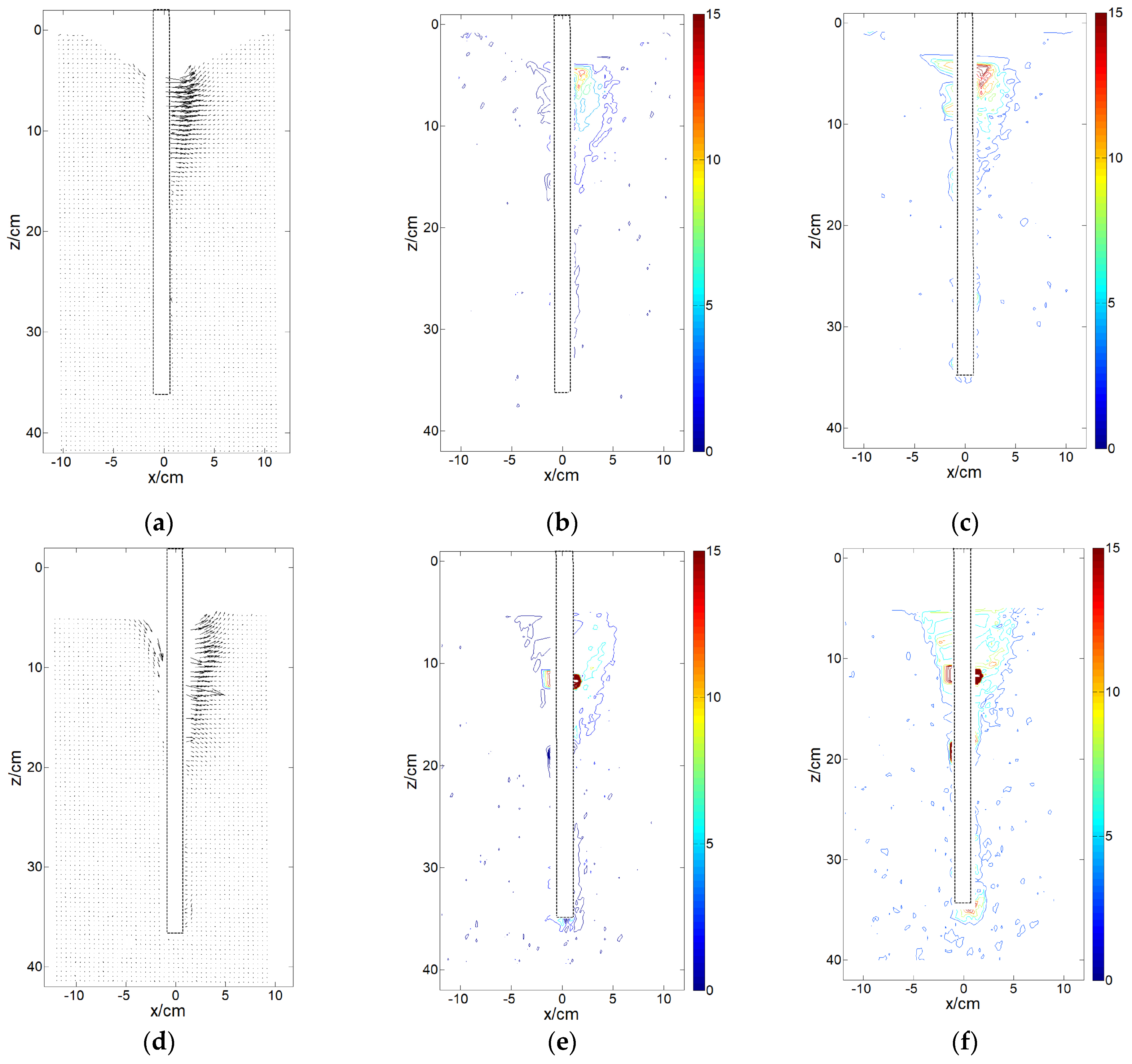

| GS (g/cm3) | Cu | Cc | emax | emin | d50 | φ (°) |
|---|---|---|---|---|---|---|
| 2.63 | 1.34 | 0.96 | 0.75 | 0.56 | 0.39 | 33 |
| Number | Diameter D/cm | Scour Depth Sd/cm | Scour Slope θ/° | Scour Width Sw/cm | Each Weight /g |
|---|---|---|---|---|---|
| A-1 | 2 | Non-scour | 160 | ||
| A-2 | 2, 4, 6 | 0° | 0 | ||
| A-3 | 2, 4, 6 | 30° | 0 | ||
| A-4 | 4 | 10°, 20°, 30° | 0 | ||
| A-5 | 4 | 30° | 6, 12 | ||
Disclaimer/Publisher’s Note: The statements, opinions and data contained in all publications are solely those of the individual author(s) and contributor(s) and not of MDPI and/or the editor(s). MDPI and/or the editor(s) disclaim responsibility for any injury to people or property resulting from any ideas, methods, instructions or products referred to in the content. |
© 2025 by the authors. Licensee MDPI, Basel, Switzerland. This article is an open access article distributed under the terms and conditions of the Creative Commons Attribution (CC BY) license (https://creativecommons.org/licenses/by/4.0/).
Share and Cite
Yu, F.; Yang, X.; Yao, Z.; Meng, Y. Experimental Study on a Laterally Loaded Pile Under Scour Condition Using Particle Image Velocimetry Technology. J. Mar. Sci. Eng. 2025, 13, 1125. https://doi.org/10.3390/jmse13061125
Yu F, Yang X, Yao Z, Meng Y. Experimental Study on a Laterally Loaded Pile Under Scour Condition Using Particle Image Velocimetry Technology. Journal of Marine Science and Engineering. 2025; 13(6):1125. https://doi.org/10.3390/jmse13061125
Chicago/Turabian StyleYu, Feng, Xiaofeng Yang, Zhaoming Yao, and Yaoyao Meng. 2025. "Experimental Study on a Laterally Loaded Pile Under Scour Condition Using Particle Image Velocimetry Technology" Journal of Marine Science and Engineering 13, no. 6: 1125. https://doi.org/10.3390/jmse13061125
APA StyleYu, F., Yang, X., Yao, Z., & Meng, Y. (2025). Experimental Study on a Laterally Loaded Pile Under Scour Condition Using Particle Image Velocimetry Technology. Journal of Marine Science and Engineering, 13(6), 1125. https://doi.org/10.3390/jmse13061125





